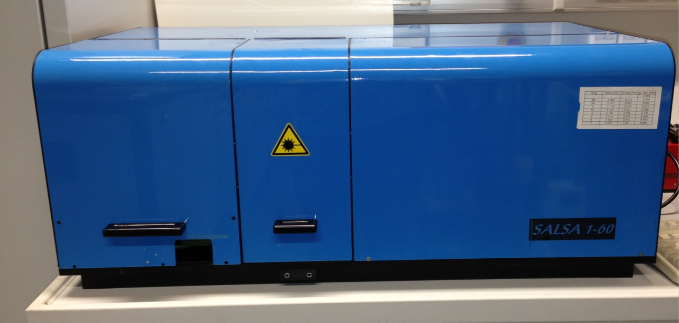Static Light Scattering
Static Light Scattering at the Graz University of Technology

Static light scattering is a technique in physical chemistry that measures the intensity of the scattered light to obtain the average molecular weight Mw of a macromolecule, such as a polymer or a protein in solution. Measurement of the scattering intensity at many angles allows calculation of the root mean square radius, also called the radius of gyration Rg. By measuring the scattering intensity for many samples of various concentrations, the second virial coefficient A2 can be calculated.For static light scattering experiments, a high intensity monochromatic light, usually a laser, is launched in a solution containing the macromolecules. One or many detectors are used to measure the scattering intensity at one or many angles. The angular dependence is required to obtain accurate measurements of both molar mass and size for all macromolecules of radius above 1-2% of the incident wavelength.
Contact: Heinz Amenitsch
Tel: +43 (316) 873 – 32145
Technical specifications
The flat cell light scattering instrument consists of a GLG530 Helium-Neon Laser (NEC Corporation, Tokyo, Japan, P=10mW, λ=632.8nm) and an array consisting of 160 photodiodes for simultaneously detecting scattering curves from 1° to 60° (scattering vector in water 2.3×10-4 to 1.3×10-2 nm-1). The sample cell has a variable thickness of 15 μm up to 5 mm. This allows the measurement of turbid samples with particle sizes between a few hundred nanometers up to about 10 μm.
New Users
Further information regarding sample environment and sample requirements can be found here.
Detailed information can be found on the Instrument’s webpage.
-
01.02.2024
X-ray Microimaging and Microspectroscopy
-
21.12.2023
AMS-IRMS for radiocarbon dating



